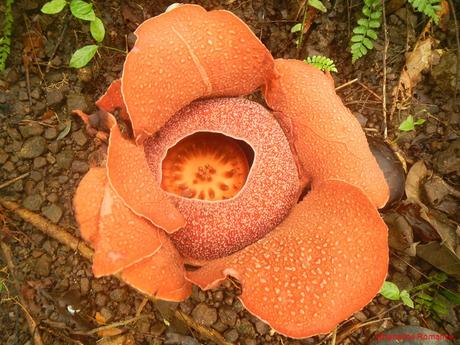
The life-giving rainforests that once carpeted large tracts of our country hold a lot of amazing secrets. Beneath their thick canopies are a plethora of mysterious flora, fauna, and other organisms that are yet to be discovered and documented—many of them beneficial to mankind. During our week-long Experience Antique tour, we had a rare opportunity to lay eyes on the Rafflesia flower, one of the most seldom seen wonders that makes the rainforests of Panay very special.
We had a well-deserved lunch at the Valderama municipal hall after our cultural immersion in the scenic Antique rice terraces. Following a round of hot coffee, we headed to our next destination, which lies beyond this lofty man-made forest. This expansive grove of trees is reminiscent of the popular man-made forest in Bohol.
The thick trees made the air comfortably cool even though the noontime sun was hot and glaring.
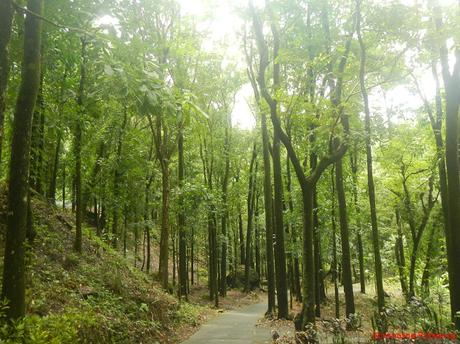
It only took us 15 minutes to reach our jump-off point, the Villa Valderama Nature Park in Barangay Binanogan. The VVNP was a privately owned resort that closed down several years ago.
In 2010, the Valderama LGU saw the excellent potential of the VVNP to become an eco-tourism site and a popular weekend getaway for locals and tourists alike. Thus, they immediately launched a rehabilitation program to rehabilitate the facility.
The nature park now has rooms, villas, a conference hall, volleyball court, and other amenities.
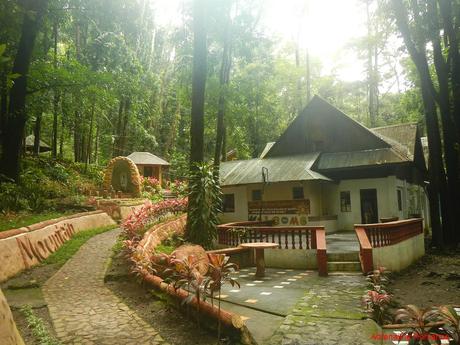
The song of a nearby rushing river took precedence over the low hum of our vehicles. We were once again engulfed in natural bliss.
The entire man-made jungle that surrounds the Villa Valderama Nature Park is part of a massive community-based forest and mangrove management project for Panay and Negros. It is co-financed by the Federal Republic of Germany and implemented by our own Department of Environment and Natural Resources.
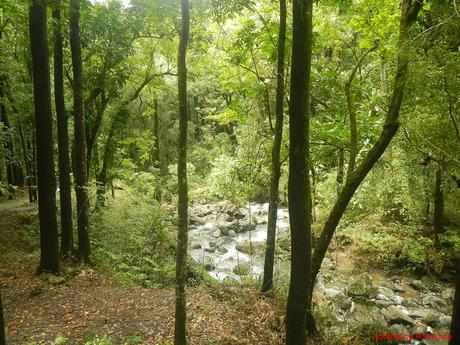
After meeting our guide, we climbed up the main stairs that led to the gateway of the forest. This is the park’s main “hall” with several pathways leading to various areas around the park.
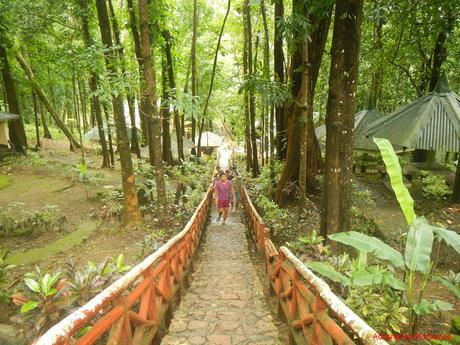
Open-air sheds and cottages allow friends and families to have picnics and gatherings. The setup is quite similar to Mambukal Mountain Resort in Murcia, Negros.
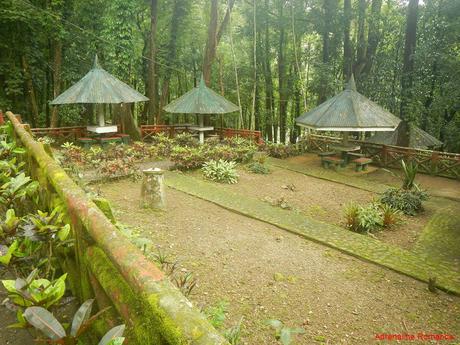
The most popular attraction in the park is this large and wide swimming pool. Surrounded by giant trees on all sides, swimming here males you feel as if you are frolicking inside a pond or lake in the middle of a fairy-tale forest.
What makes this pool unique is that it is not powered or filtered with machinery of any kind. Nor is the water treated with chlorine and salts. A nearby mountain stream supplies the water in the pool. Because the water is continuously flowing, it spills over into the river below. Thus, the waterway is not obstructed in any way.
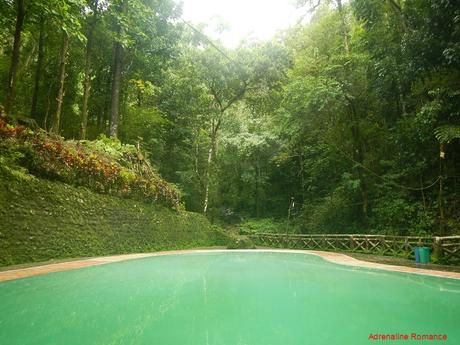
That is the stream we were talking about earlier. If the pool feels too “artificial” for you, you can simply head to this stream and immerse yourself in the cool, fresh water. And by sitting beneath the cascades, you’ll get a great water massage!
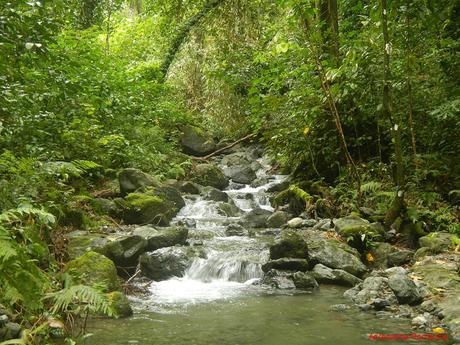
Our old but experienced guide led us deep into the woods. He is quite familiar with the mountainside because this was his playground when he was still a kid!
But the original forest is no more due to logging and harvesting of rattan and abaca. The reforestation project is successful, yes; but the trees that were being planted are mahogany saplings, which are not indigenous. In other words, the entire area is parasitic. That means the mahoganies absorb most of the nutrients that their local counterparts need to survive.
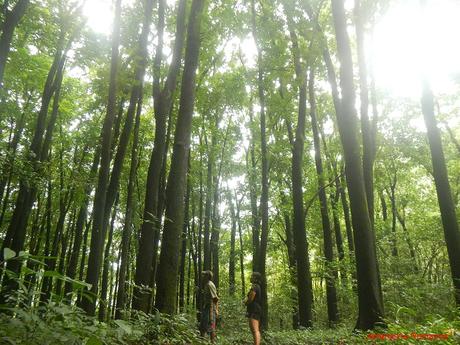
Getting into the forest required a one-hour hike into the thick mahogany canopy. At times, we had to cross small, shallow streams like these.
These streams are vital waterways; many of them connect to irrigation systems that give life to the farms in the lowlands.
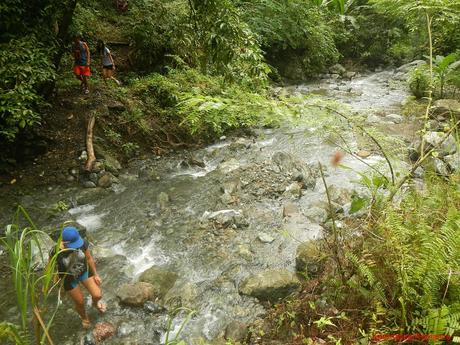
It’s really quite amazing. One minute, we were on an established trail hewed by mankind. Then suddenly, the once-discernible trail disappears as if the mountain stream washed it away.
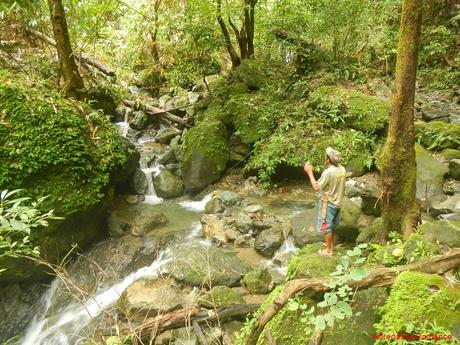
After 45 minutes, we finally arrived under a dense, moist part of the woods. Here, we found what we were looking for—the enigmatic Rafflesia Speciosa, which is endemic to the island of Panay. According to botanists, this is the third species of Rafflesia to be discovered and documented in the Philippines.
The Rafflesia Speciosa, like other species of its genus, is a parasitic flowering plant. It is a holoparasite, which means that its life cycle and reproduction cannot be completed unless it exploits a suitable host. It is for this reason that the rafflesia is an elusive plant.
As recommended by botanist Dr. Julie Barcelona, the Provincial Government of Antique is considering the Rafflesia Speciosa as the provincial flower of Antique. “In this way, this species and its habitat will be protected,” she explains.
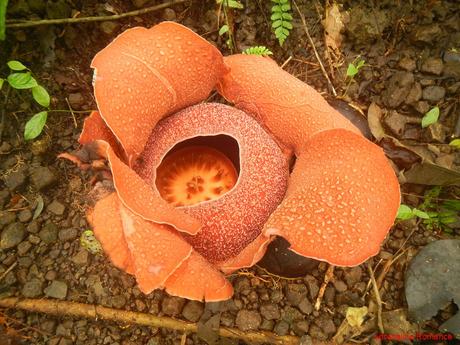
Look at the size of that flower! But there are other species of the genus that dwarfs the Speciosa, which is considered to be a medium-sized Rafflesia.
You would find this hard to believe, but all Rafflesias do not have stems, leaves, or roots. Rather, it inserts and spreads its haustorium, an appendage, into the tissue of its host vine. It is through the haustorium that the parasite siphons nutrients from the host. Thus, the flower is the only part that is visible.

Nearby, we can see several dark Rafflesia buds like this. In time, this will open up and bloom into the characteristic red-orange flower.
The Rafflesia emits a foul odor much like that of rotting flesh. The scent attracts flies which become agents of pollination.
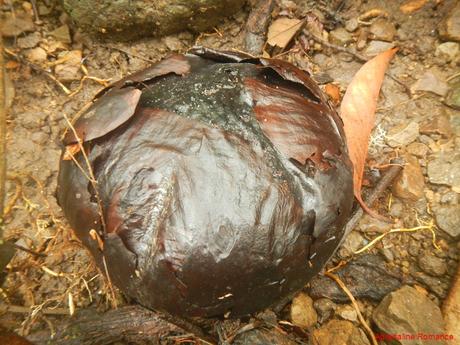
Here’s a Speciosa that has wilted and reached the end of its life. Probably, it has completely drained its host’s nutrients.
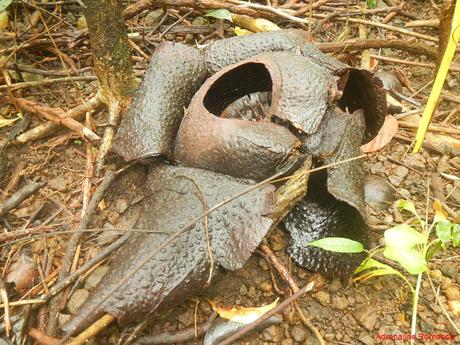
But the Rafflesia is not the only strange plant in the forest. We found plenty of these red pod-like flowers in the forest.
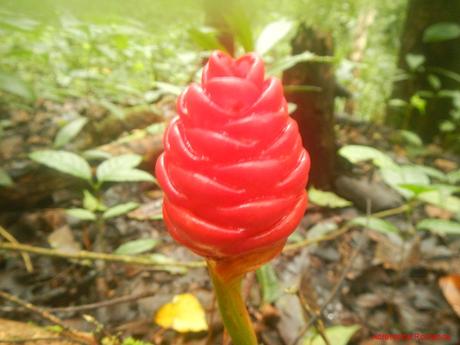
Are these huge peppers? Berries? Vegetables? Flowers? They sure look pretty, but unless we know what they are, we’re not going to eat them!
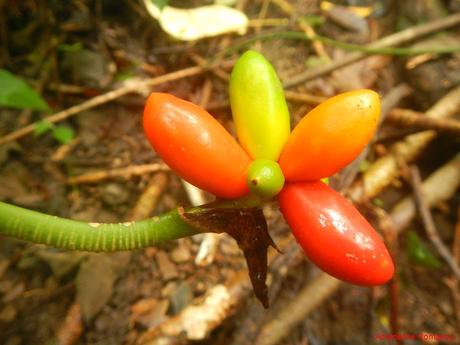
Sweet red berries? Nope! Our guide said these are actually flowing plants!
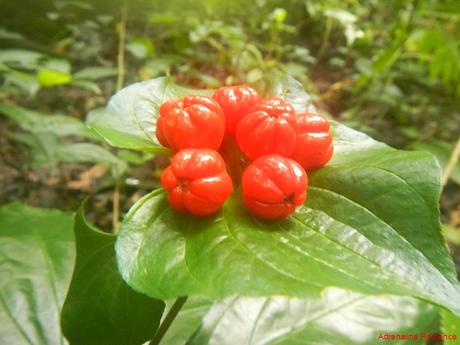
Among the rarities, we also found a lot of flora that we commonly find in the wild such as these ferns.
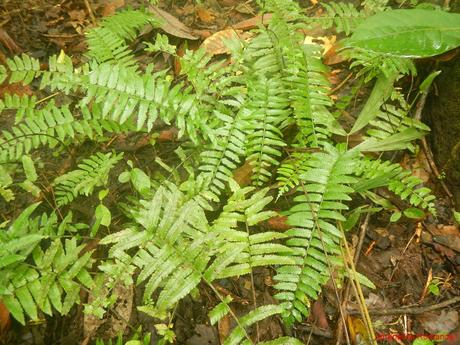
These large-leafed shrubs make perfect homes for insects and worms.
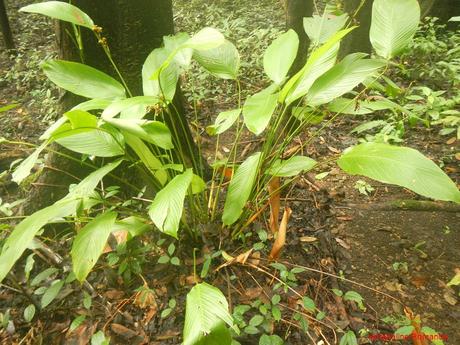
Polypores slowly eat rotting trees, forming a natural part of the tree’s life cycle. These organisms play an important part in the decay process, particularly the production of carbon dioxide and nutrient cycling.

We reached the Villa Valderama Nature Park after 45 minutes of trekking downhill. Drenched in sweat and humidity, we refreshed ourselves by taking a cool dip in the pool.
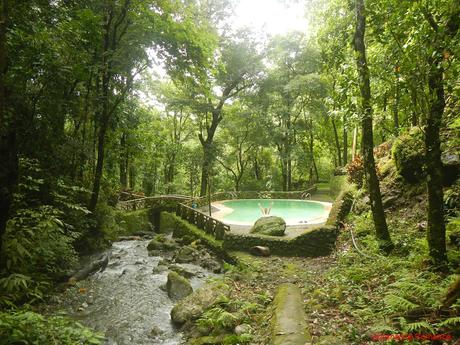
The green forests of Panay Island holds a lot of secrets, and we consider ourselves quite fortunate for having seen one of these treasures—a Rafflesia in full bloom. If we want our children and their children to experience the same awe and wonder as we did, then we should make every attempt to protect, preserve, and regrow our country’s forests.
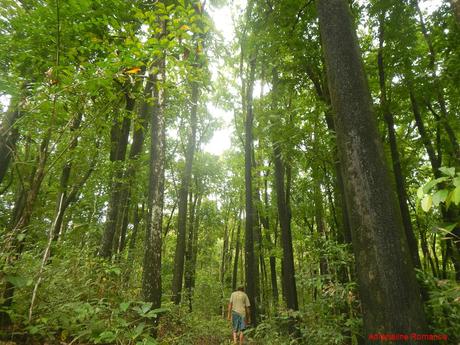
Contact Details
To facilitate your tour around the Villa Valderama Nature Park in Valderrama, Antique, get in touch with the following:
- Ms. Mike Tiad (Villa Valderama Nature Park Manager) – 0926-314-6733
- Mr. Tim Ledesma (Valderrama Tourism Officer) – 0917-507-5409
- Mr. Flord Calawag (OIC Antique Provincial Tourism Office) – 0927-699-5727 / 0919-813-9893
- Ms. Jola Lyn Tingson (Antique Natural Tourism Program Head) – 0977-811-0017
- Email: [email protected]
- Website: Province of Antique
- Phone Number: 0995-5034544
We strongly recommend contacting any of these officers before your trip so they can coordinate with the accommodation providers and the necessary people to help you in your cultural immersion.
Once you arrive in Valderrama, head first to the municipal hall to register. Then see the tourism officer/staff for assistance.
Rates*
Transportation
- P 178 per person – bus fare from Iloilo City to Laures crossing (same rate applies on the return trip)
- P 25 per person – tricycle fare from Laures to Valderrama Town Center (same rate applies on the return trip)
- P 50 per person – habal-habal fare from Valderrama town center to VVPN (same rate applies on the return trip)**
Villa Valderama Nature Park Related Fees
- P 20 per person – registration fee for adults
- P 15 per person – registration fee for children
- P 75 per unit – family shed rental
- P 50 per unit – picnic table rental
- P 50 per person – dormitory
- P 500 per room – Maragtas Room
- P 500 per room – Duplex Room
- P 300 per room – New Cottage
- P 200 per day – conference room
- P 250 per group of 5 people – guide fee to Rafflesia site
- P 300 per group of 5 people – guide fee to Kawa Kawa Falls
- P 500 per group of 3 people – guide fee to Triple Falls
* Rates are subject to change without prior notice. We did not include our expenses for meals, snacks, souvenirs, accommodations, tips, and other fees in this rate sheet as you may have different needs, preferences, itineraries, and sharing scheme from us.
** Although the VVPN is relatively near the town center, it is located deep within the reforestation area. It can therefore be difficult to catch a habal-habal on the return trip. Make sure you arrange with the habal-habal driver to fetch you on an agreed time. We strongly recommend asking the assistance of the Valderrama tourism office to make such arrangements.
Tips
1. For large groups or for a more private tour, you can hire an air-conditioned van from Southwest Tours. Use the following contact details:
- Cellphone Numbers: 0917-568-2441 or 0947-891-1658
- Email: [email protected]
2. Aside from the Rafflesia site, there are other natural attractions in the VVNP such as Kawa Falls and the Triple Falls. Check the rates above, and ask for assistance.
3. The trek to the Rafflesia site is quite easy. It will take you roughly 45 minutes to 1 hour on a relaxed pace on rolling terrain. However, be careful as the large rocks on the trail are slippery.
4. Do not touch the Rafflesia! These are very delicate flowers, and the slightest touch may have an adverse effect on them.
5. Pack light but do bring the following:
- water (at least 1 liter)
- dry-fit clothes or rash guard
- trekking pants or shorts
- trekking shoes or sandals with aggressive tread
- dry clothes
- umbrella, hat, or scarf and sunglasses
- rain gear (in case of bad weather)
- extra money for emergencies
- medications (if any)
- toiletries
- snacks
6. Help preserve the forest by by not throwing garbage anywhere. Put your trash in a plastic bag and bring it back to town for proper disposal.

